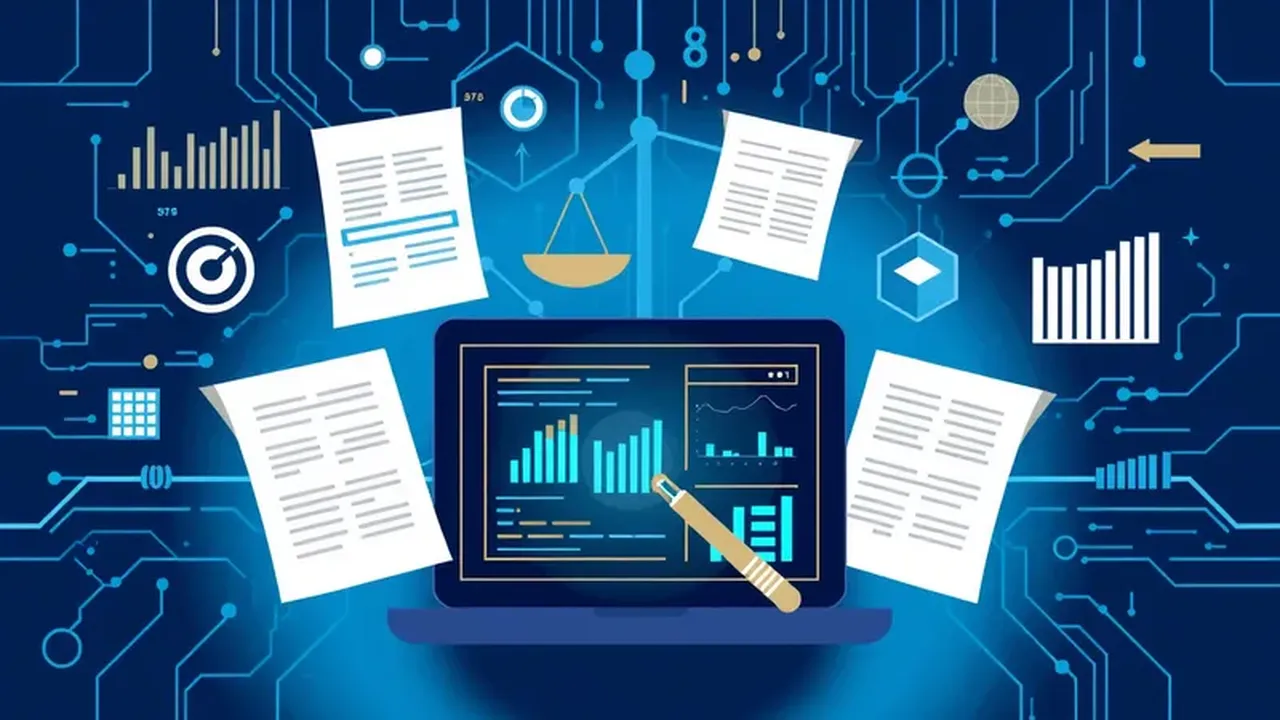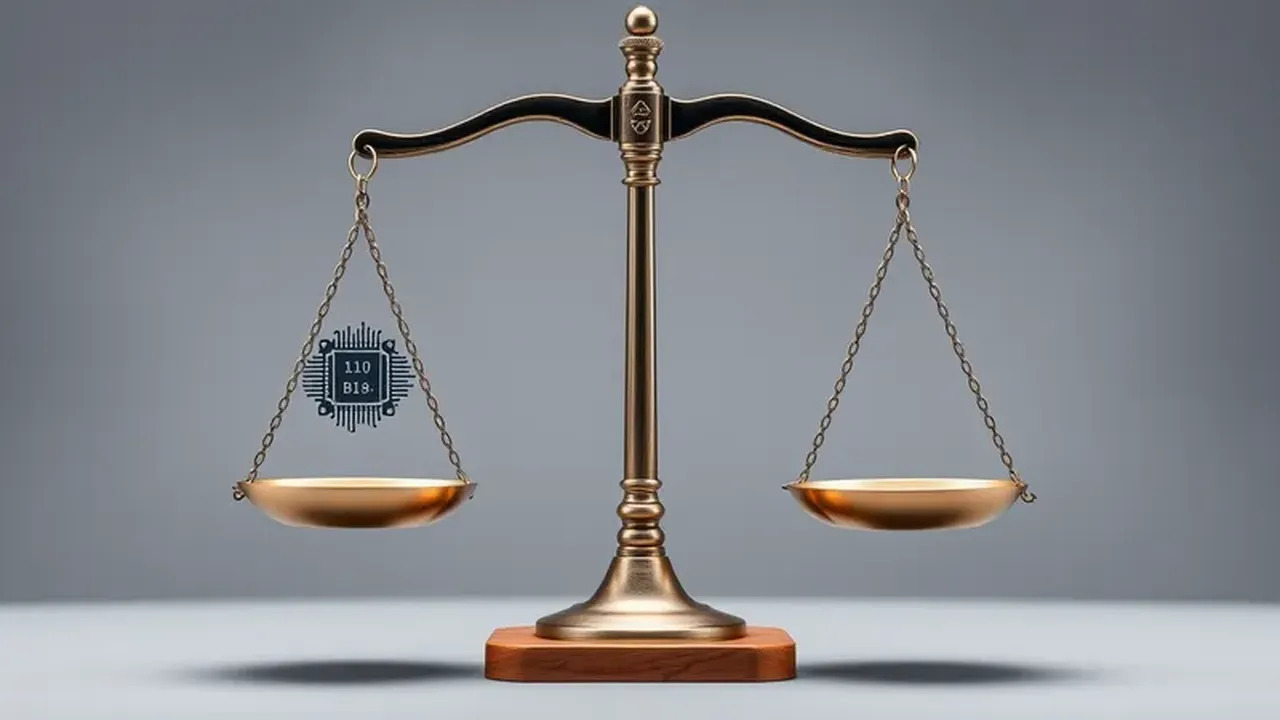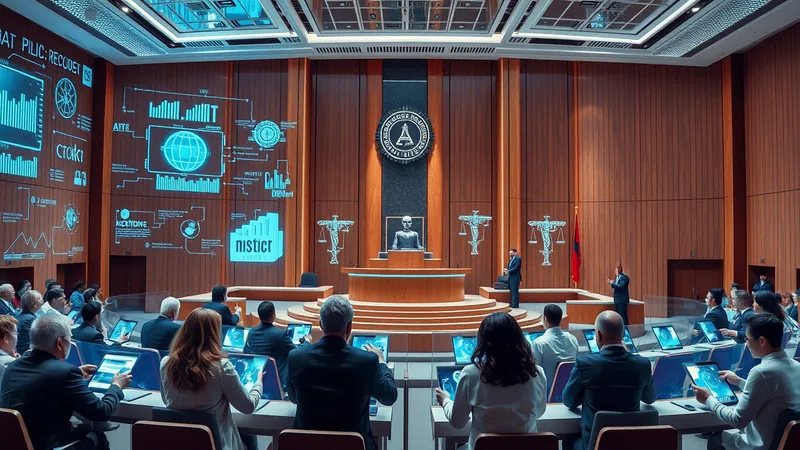Judge's Gavel or Mouse Click: Justice on the Verge of an AI Revolution
Imagine a courtroom. Instead of a robed judge, there's a flickering screen or a calm voice emanating from speakers. Your future, your guilt or innocence, is determined not by a human, but by a highly complex algorithm. Science fiction? Yesterday, yes. Today, it's a topic of heated debate and initial experiments. This article delves into a world where Artificial Intelligence (AI) is knocking on the doors of justice, promising a revolution but also raising serious concerns. Can code deliver a truly fair verdict, and are we ready for such a future?

AI in the Temple of Themis: What Is It and How Does It (Theoretically) Work?
When we talk about an "AI judge," it's important to understand that it doesn't always mean a complete replacement of humans by machines. More often, it refers to AI-based systems capable of performing a wide range of tasks: from automatic processing and analysis of millions of pages of legal documents to assisting in decision-making. Machine learning and Natural Language Processing (NLP) technologies allow AI to "read" and understand legal texts, court decisions, and case materials. For example, platforms like ROSS Intelligence already exist, helping lawyers conduct research and find relevant information in vast databases in seconds, a task that previously took hours and days.
Several levels of potential AI application in justice can be distinguished:
- AI as a legal assistant: document analysis, compliance checks, preparation of draft decisions.
- AI as a tool for predictive justice: assessing the probability of case outcomes or recidivism risks. Some platforms, like the Predict feature in CaseText (Predict), are already attempting to move in this direction.
- AI as an arbiter (in limited cases): handling simple administrative or civil cases where the human factor is minimal.
- Hypothetical AI judge: fully autonomous verdict delivery across a wide range of cases (the most controversial and distant scenario).
The Scales of Justice in the Digital Age: Potential vs. Bias
The prospects of using AI in justice look tempting, but the risks are also very significant.

"For": Arguments in Favor of AI Justice
- Speed and efficiency: AI can process cases and analyze information many times faster than humans, which can significantly reduce the length of legal proceedings.
- Accessibility of justice: Cost reduction and automation can make legal aid and judicial protection more accessible to broader segments of the population.
- Objectivity and consistency: Theoretically, AI can be free from human emotions, fatigue, personal sympathies, or biases, applying the law uniformly to all.
- Big data analysis: AI can identify complex patterns and correlations in judicial practice that are inaccessible to human analysis, potentially improving the quality of justice.
"Against": Risks and Challenges of AI Justice
- Algorithmic Bias : This is perhaps the main stumbling block. If AI is trained on historical data that reflects existing societal prejudices (racial, gender, social), it will inevitably inherit and even amplify them. A verdict delivered by such an AI will be systematically discriminatory.
- The "black box" problem: Many modern AI models, especially deep neural networks, make decisions in a way that their logic is extremely difficult or impossible for humans to trace and explain. How can one trust or appeal a verdict if its basis is unclear?
- Lack of human qualities: Justice is not just the formal application of law. It requires empathy, compassion, understanding of unique human contexts, and the ability to assess unwritten moral norms. AI is incapable of this.
- Accountability issues: Who will be responsible for an erroneous decision by an AI judge? The algorithm developers? The state that implemented the system? A specific official? The lack of a clear answer undermines the foundations of the legal system.
- Risk of dehumanization: Turning the living, human process of justice into a cold, mechanistic calculation can lead to a loss of trust and alienation of citizens from the judicial system.

Is Society Ready? Ethics, Laws, and the Future of Digital Judges
Even if technological problems are solved, fundamental ethical and legal questions remain.
- Need for legal regulation: Clear international and national standards for the use of AI in justice are required. These standards must ensure transparency of algorithms, their accountability, the possibility of independent audits, and mandatory human oversight at all critical stages.
- Public trust: Are we, as a society, ready to delegate the power to decide human fates to a machine? Polls show that the level of trust in AI in such sensitive areas is still low. Open dialogue and educational efforts are important.
- The role of humans: Most experts agree that AI is unlikely to completely replace human judges in the foreseeable future. Rather, it's about synergy – AI as a powerful tool helping judges make more informed and, possibly, fairer decisions.
Verdict on the Future: AI – Tool or Replacement for Humans in Justice?
The introduction of AI into the justice system is a complex and multifaceted process that brings both enormous opportunities and serious threats. The answer to the question posed in the article's title cannot be unequivocal. The fairness of a verdict delivered by an algorithm will directly depend on the values, data, and ethical principles we embed in its foundation.
AI has the potential to become a powerful tool for increasing the efficiency and accessibility of justice, but it must not replace human judgment, empathy, and responsibility. The key to success lies in developing human-centric AI systems where technology serves as support, not a substitute, and where the final decision and responsibility always remain with humans. The future of digital justice requires not only technological breakthroughs but also deep ethical reflection and broad public dialogue.
